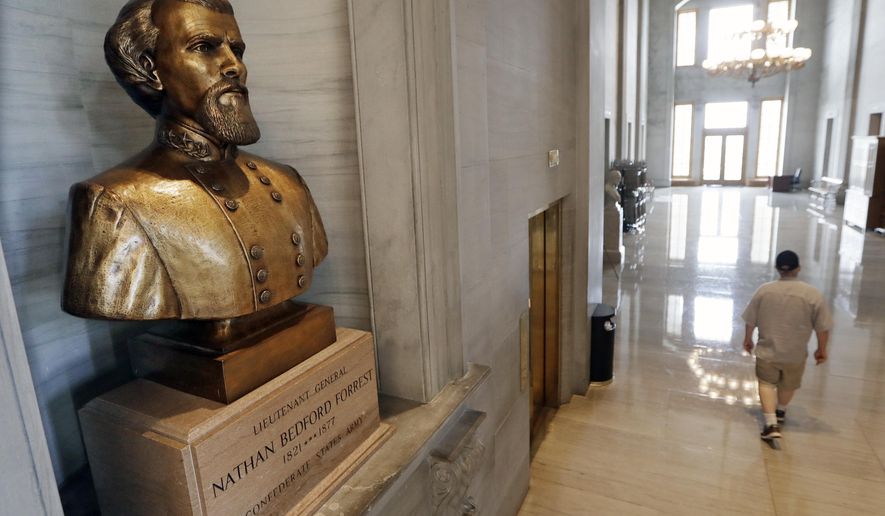NASHVILLE, Tenn. (AP) - A Republican-led legislative panel has decided not to decide, for now, whether it thinks a bust of a former Confederate general and early Ku Klux Klan leader should be removed from the Tennessee Capitol.
The House committee on Naming, Designating, & Private Acts voted Tuesday to delay consideration of the nonbinding resolution that favors removing the statue of Nathan Bedford Forrest until the panel’s last meeting, likely months away. Republicans said the delay allows Tennessee’s Capitol Commission to weigh in first. The commission meets Feb. 20 and will allow public testimony on the bust, but officials don’t plan to hold a vote at that meeting.
Removing the bust would require approval from the Capitol Commission and then the state’s Historical Commission, as laid out by the Tennessee Heritage Protection Act.
Republican Rep. Andy Holt made the motion to delay action on the resolution. He and other Republicans also raised technical concerns with the proposal and amendments, and he said lawmakers can communicate with the Capitol Commission in ways other than an resolution.
“We’re going to have plenty of time to converse about it, to allow the other entities that have already been, by law, set in place to make decisions regarding that bust,” the Dresden lawmaker said.
The resolution’s sponsor, Democratic Rep. Rick Staples of Knoxville, countered that he fears the commission members won’t act without lawmakers urging them to move the bust. The resolution encourages the bust’s removal and replacement with an “appropriate tribute to a deserving Tennessean.”
“I do not believe (the commission) will take this matter up, and they will pass it on, and we will have to revisit this again,” said Staples. He told the panel last week that he was presenting the resolution as a descendant of slaves.
Forrest was a Confederate cavalry general who amassed a fortune before the Civil War as a plantation owner and slave trader in Memphis. After the war, he was a leader of the Klan, which terrorized black people as it sought to reverse Reconstruction efforts and restore white supremacy.
His bust at the Capitol was unveiled in 1978 and has stirred opposition ever since. Some have called for adding more historical context to the bust, while others have suggested moving it to the state’s history museum.




Please read our comment policy before commenting.